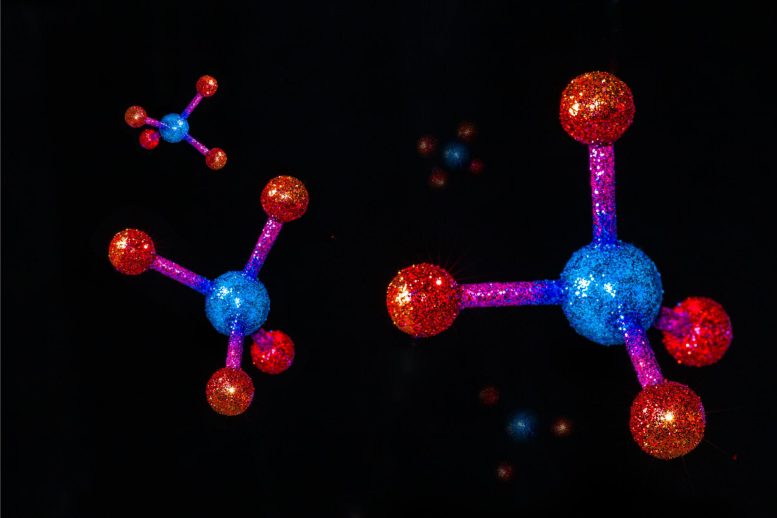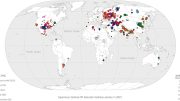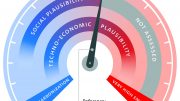
Methane, a potent greenhouse gas with significant emissions from human activities, notably in cities, has a substantial impact on global warming. Researchers have now identified numerous previously undetected methane sources in Hamburg, primarily from human activities like leaking gas pipelines and incomplete combustion, using a mobile sensor network, intending to update and enhance the accuracy of emission maps for better understanding and management.
Following carbon dioxide, methane ranks as the second most prevalent greenhouse gas resulting from human activities. Its global warming potential over two decades exceeds that of carbon dioxide by over 80 times, with the most significant emissions stemming from wetlands, agriculture, waste, and fossil fuel production.
Although methane’s presence in the atmosphere is relatively brief, about 12 years compared to centuries for carbon dioxide, reducing methane emissions holds significant promise for curbing global warming in the near to intermediate future.
Methane emissions in cities
A substantial portion of global methane emissions occurs in cities. There are many locations where methane is released – intentionally or accidentally. The research team at the Technical University of Munich (TUM) selected Hamburg as a location to track down methane leaks and other unknown sources.
Hamburg is not only Germany’s second-largest city by population. It is also a port and an industrial center. With its various methane sources, it offers ideal conditions for the project.
Numerous methane sources discovered in Hamburg
Through the project, the team succeeded in identifying numerous previously undetected methane sources in Hamburg. Along with natural sources such as the Elbe River, the largest share of emissions is caused by human activity. Around half of these emissions come from leaking gas pipelines, incomplete combustion, and other industrial and fugitive emissions.
The mobile measurements also made it possible for the researchers to detect unknown methane sources. They discovered that around 2 percent of human-caused methane emissions in Hamburg originated from leaking pipes at one oil refinery and a nearby cattle farm, which are highly underestimated in the state-of-the-art emission inventory.
Updating existing measurement data
The researchers began with an emission map from the Dutch research institute TNO. It provides a spatial representation of greenhouse gas emissions in Hamburg, based on nationally reported emissions that have been spatially distributed using proxy data (population density map, etc.). To check and update the values shown on the map, the team selected two approaches:
“First, we conducted mobile measurements using a car equipped with sensors. We drove it through areas, where we expected to detect methane emissions, to gain a better understanding of the spatial distribution. Second, we used our sensor network to measure the overall emissions in the city. The network is made up of four measurement devices, which we used in previous studies to measure emissions in Munich,” says Jia Chen, Professor of Environmental Sensing and Modeling at TUM. “Our sensor network uses the sun as a light source. Because every molecule in the atmosphere absorbs only specific frequencies of the sunlight, we can determine the concentrations of the various greenhouse gases in the column of air between our measurement device and the sun.”
Measurements in and around Hamburg
To find out the quantities of greenhouse gases being emitted within Hamburg, the researchers positioned one measurement device in the city center, with the others placed in the eastern, southern, and western outskirts.
“That meant that one sensor was always upwind from the city, with another one positioned downwind. If the second measurement value is higher than the first, we can use atmospheric transport models to quantify the greenhouse gases being released in the city. For this purpose, we measure wind speed, wind direction, and turbulence with an optical wind LiDAR,” says Andreas Forstmaier, first author of the study and researcher at the Professorship of Environmental Sensing and Modeling.
Future use of measurement technology
The method designed for cities will be expanded in the future to perform global measurements using satellites. With this work, the researchers aim to make a decisive contribution to understanding climate change and slowing down its progress.
Reference: “Quantification of methane emissions in Hamburg using a network of FTIR spectrometers and an inverse modeling approach” by Andreas Forstmaier, Jia Chen, Florian Dietrich, Juan Bettinelli, Hossein Maazallahi, Carsten Schneider, Dominik Winkler, Xinxu Zhao, Taylor Jones, Carina van der Veen, Norman Wildmann, Moritz Makowski, Aydin Uzun, Friedrich Klappenbach, Hugo Denier van der Gon, Stefan Schwietzke and Thomas Röckmann, 22 June 2023, Atmospheric Chemistry and Physics.
DOI: 10.5194/acp-23-6897-2023









“Its global warming potential over two decades exceeds that of carbon dioxide by over 80 times, …”
Yet another proponent for the claim “reducing methane emissions holds SIGNIFICANT promise for curbing global warming in the near to intermediate future” that fails to mention that the global warming potential presented is calculated on a basis of equal weights. Methane and carbon dioxide, which have different molecular weights, are measured and presented on a basis of molecular fraction. Compared molecule to molecule, that means that methane is less then 31X as potentially effective as carbon dioxide for the two decadal period. Furthermore, methane not only has a shorter life span, but it is much rarer. Currently, there is about 2 parts per million of methane in the air, compared to about 420 PPM of carbon dioxide. Because we are concerned about long-term warming, one can argue that the global warming potential over a century (<12X) is a better measure than then 31X short-term factor.
https://wattsupwiththat.com/2023/03/06/the-misguided-crusade-to-reduce-anthropogenic-methane-emissions/